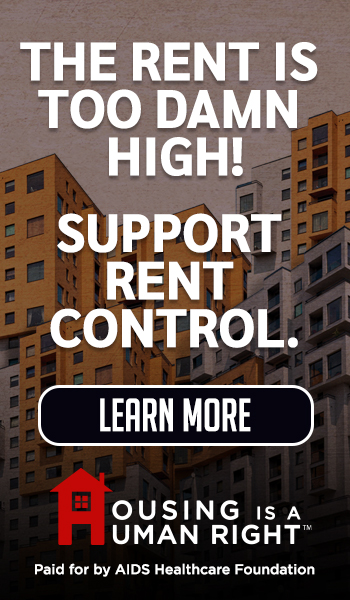Comments
MY THOUGHTS - The controversial rent control issue can be simplified graphically by picturing a balance board: landlords on one side, renters on the other. Politicians, as always, are at the center as the pivot point, the fulcrum.
Politicians set the critical government rental policy—a rent ceiling—to stop landlords from raising residential rents freely. Landlords argue that unreasonable controls decrease housing supply and quality and discourage repairs and new construction.
But, beyond perceptions and philosophical wafting, there are serious fundamental questions that require sensible and uncomplicated solutions. The Los Angeles City Council faced this issue last week in what can be described as a stress test. It failed.
After heated deliberations, the council’s 12-2 vote revised its rent control rules, significantly reducing annual rent hikes for tenants. The debate was more of a dispute over how much regulation is needed as living costs rise and income inequality grows. It could be said that it centered on conjectures about the widening gap between rich and poor.
Even though council members espouse different convictions, the main question remained unanswered: will the proposed changes give tenants in financial trouble the help they need, or could they negatively impact landlords? The measure needs one more vote to confirm its wording before it becomes law, and it is likely to go into effect before many tenants face their next rent hike in February.
Democratic Socialist councilmember Nithya Raman proposed the motion to update a decades-old rent stabilization ordinance (RSO), arguing it currently placed too much pressure on tenants. It is seen as a populist appeal with landlords contending the regulations shift the burden onto them, prompting some to sell their properties.
Some perceive that Raman is trying to transplant the thinking of New York City mayor-elect Zohran Mamdani’s goal to “freeze the rent” to Los Angeles. But housing costs are high here due to a shortage of homes where demand is greatest. Restrictive zoning, bureaucratic hurdles, and not in my back yard (NIMBY) opposition limit new development.
Mamdani built his campaign around a four-year rent freeze on New York’s nearly one million rent-stabilized apartments. Supporters claim that such a freeze could save renters about $6.8 billion over four years. But it could cost rental property owners $6.8 billion during the same period. Conversely, it can also unravel New York’s already strained housing market by cutting off revenue owners pay for taxes, maintenance, and debt service.
Raman told the Westside Current that “People are being forced to leave LA, and this has been devastating for our city’s resilience, our creative economy, and our overall economic strength. What's before us now is a long-overdue opportunity to adjust costs for renters and give people a reason to stay.”
She also stated that with passage of the ordinance, she would explore further changes to protect tenants with added restrictions.
Landlords find a crippling double standard with the new mandate indicating that while the city demands compliance with the new directive, requirements, such as debt service, climbing insurance rates, property taxes, refuse collection, utility charges, maintenance and other city fees are ignored.
The new RSO formula caps rent hikes for about 650,000 units, with regulations only applying to buildings built before 1978. While new landlords will have to follow these rules even under ownership transfers, they may not have to follow them if they plan to demolish and rebuild.
The move is another win for tenant advocates and supportive council members, further tightening renter protections in Los Angeles. Landlords of rent-stabilized buildings can now only raise rents by 1% to 4% annually based on inflation, compared to the previous 3% to 8%. Recent efforts have also expanded eviction restrictions and provided legal assistance for tenants.
Los Angeles Mayor Karen Bass praised the council’s decision, noting that it aligns with her wider goal of improving life in the city. In her statement, Bass emphasized efforts to make housing more affordable for Angelenos, prevent homelessness, and keep rent increases under control.
Yet her comments are in direct conflict with her expressed opposition toward SB 79, the California housing law to allow for higher-density housing development near public transit hubs.
Councilmember Monica Rodriguez, during the council’s discussion, emphasized, “You can't complain about affordability or say the ‘rent is too damn high,’ and then be part of the contributing factors that actually make it even more expensive.”
In addition to the costly rules and protections that landlords must provide their tenants, smaller landlords face disproportionate challenges to remaining financially solvent versus larger apartment investors who can leverage their economies of scale and access to cheaper capital sources.
Besides the disproportionate economic challenges that smaller landlords face compared to larger apartment investors, smaller landlords typically own much older building stock which require large and regular sums of money to repair, maintain, and upgrade. In many to most cases, a landlord will ultimately face the following sequence of events when they can’t afford to pay the bills: the landlord incurs increased interest expense from taking out more debt, the property’s safety and habitability standards degrade, the property falls into foreclosure or bankruptcy, and/or the property is sold to a new owner who will face the same challenges as the former, unless the new owner has the means to vacate and redevelop the property to be more economically viable and profitable with new, higher-priced rental units.
Given the high barriers to entry to develop apartment units in the City, making it harder for the smaller landlord to complete in the marketplace is counterproductive to the City’s mandate to protect and promote safe, affordable, and stable rental housing with the added benefit of maintain and even enhancing tax revenues.
Tenants’ hardship is understandable, but the solution will aggravate it. Affordability will come not from rent controls but from housing supply.
Swedish economist, a social democrat, Assar Lindbeck said " In many cases rent control appears to be the most efficient technique presently known to destroy a city-except for bombing" a quote which appeared in his book. "The Political Economy of the New Left: An Outsider`s View".
As always, a balanced approach is essential to protect renters while providing fair relief for landlords. Regulations that discourage new construction and maintenance are certain to be counterproductive. Los Angeles urgently needs new housing, and city leaders should avoid irrational regulations and populist measures that end up hindering development.
(Nick Patsaouras is an electrical engineer and civic leader whose firm has shaped projects across residential, commercial, medical, educational, institutional, and entertainment sectors. A longtime public advocate, he ran for Mayor in 1993 with a focus on rebuilding L.A. through transportation. He has served on major public boards, including the Department of Water and Power, Metro, and the Board of Zoning Appeals, helping guide infrastructure and planning policy in Los Angeles. He is the author of the book "The Making of Modern Los Angeles.")
















